Day thirteen was mostly a driving day. We left Albuquerque after lunch and drove about 235 miles to Holbrook with a couple of rest stops for Duncan (and us). We made a grocery store run for dinner and played in the huge fields around the hotel with Duncan. He’s never been much for playing catch and dropping the ball in my hand, but he’s learned to play kickball retrieve very well. Because the tumble weeds are no fun to walk on, I guess, we found a great area of really soft sand and played there. He’ll play this game for a long time, basically until I call it quits, so 45 minutes later we called it a night.
The next day was dedicated to Petrified National Forest Park. This is one of the National Parks where dogs are welcome so Duncan came with us. He certainly enjoyed the hikes and I know one thing, he enjoys non-petrified sticks over the petrified pieces by a long shot. This park has been a tourist destination for a long time and the proof of that is this abandoned car from early Route 66 days. I don’t know the story behind it, but I’m betting there are A LOT of pictures of it in old travel diaries. (There’s more to this story than that and if you really want to know, check here.)
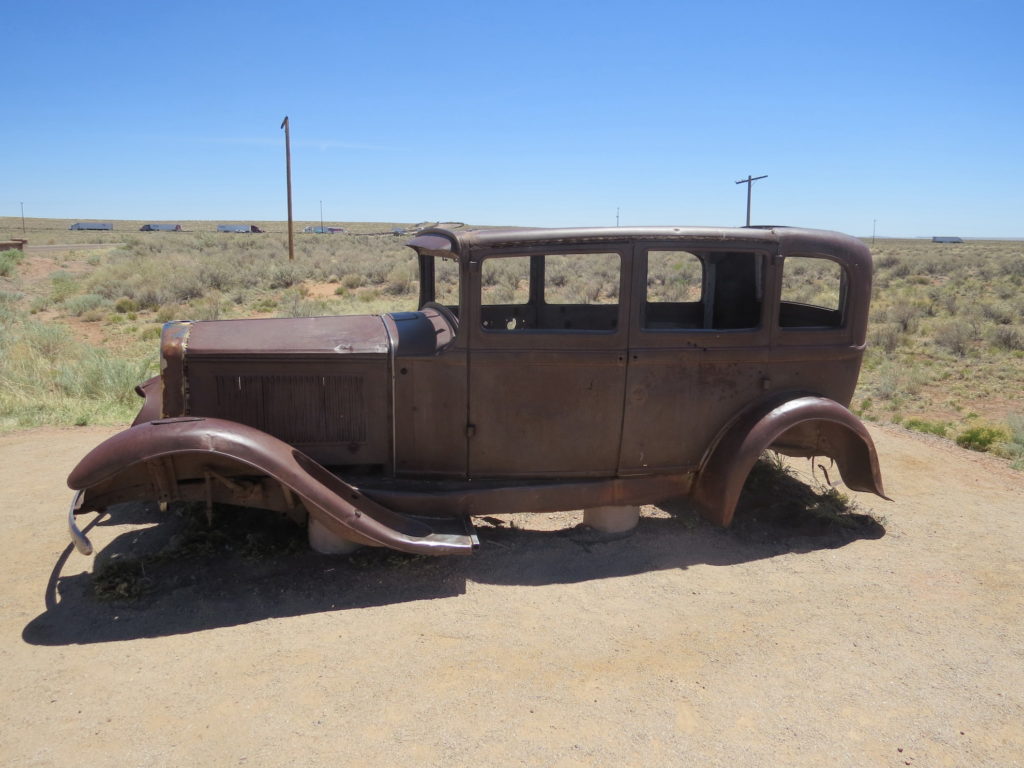
Anyway, back to the park. I don’t claim to know anything of real interest about petrified wood, but the National Park Service site for the park has a lot of information.
Petrified wood, fossil formed by the invasion of minerals into cavities between and within cells of natural wood, usually by silica (silicon dioxide, SiO2) or calcite (calcium carbonate, CaCO3). (directly from Britannica)
The trees in this area date from 200+ million years ago and came from forests around the large river systems that existed here in that time frame. Most of the large clusters of petrified wood are thought to be fallen trees that floated down the river until they became log jams, creating the clusters in the park today.
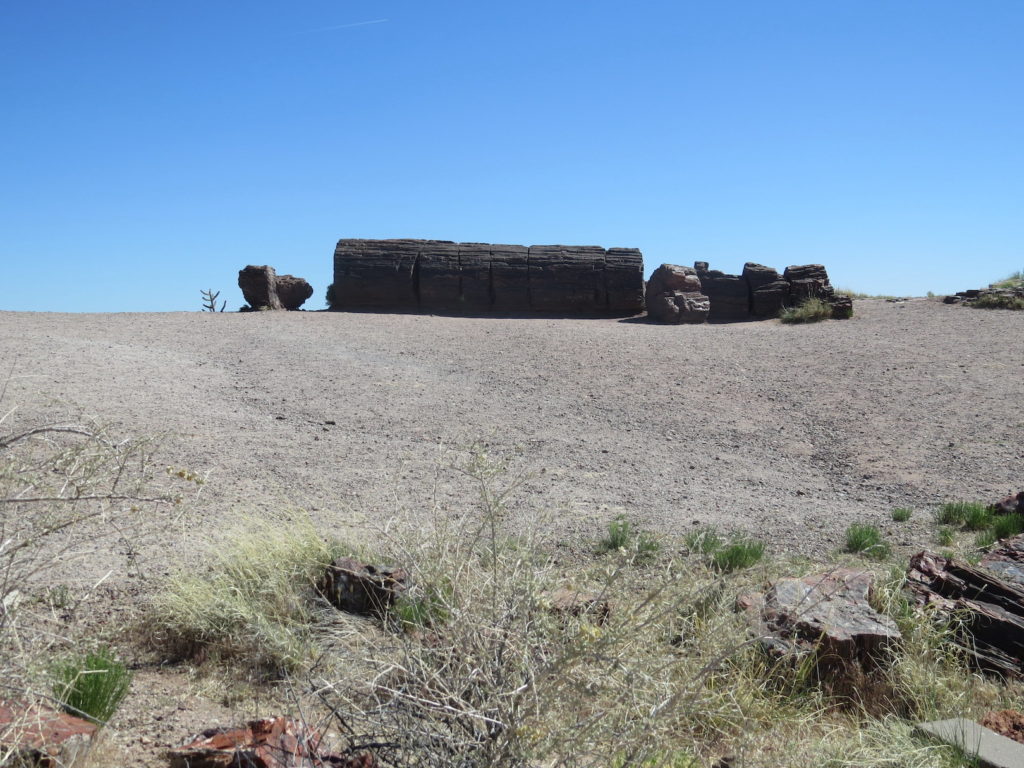
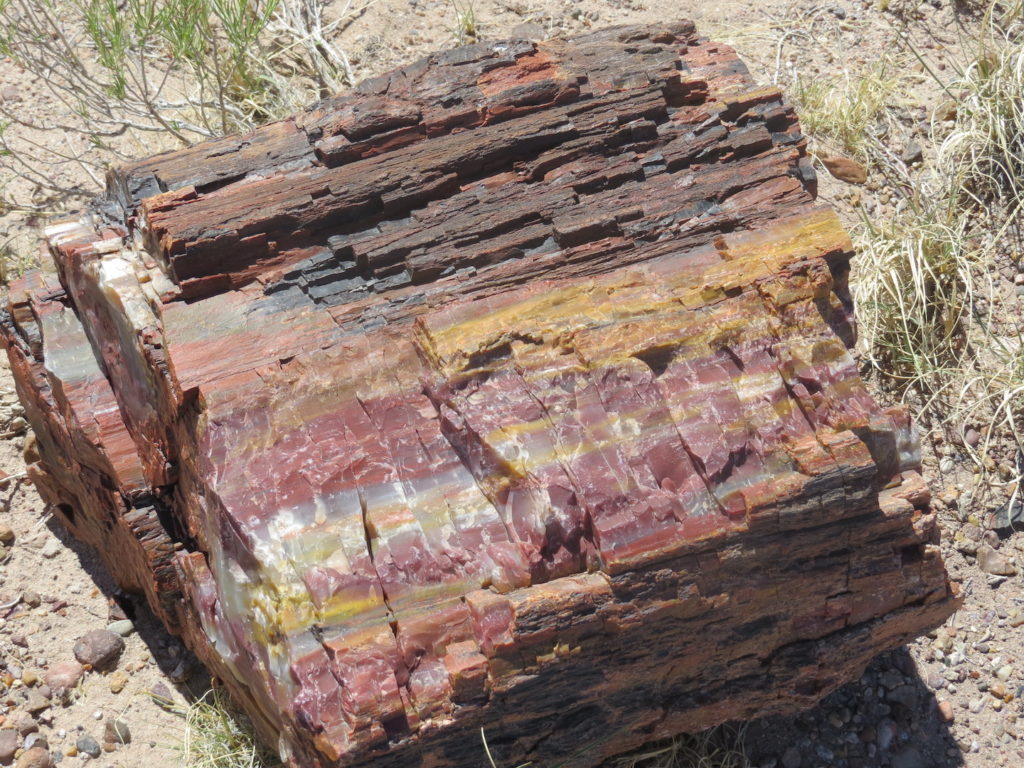
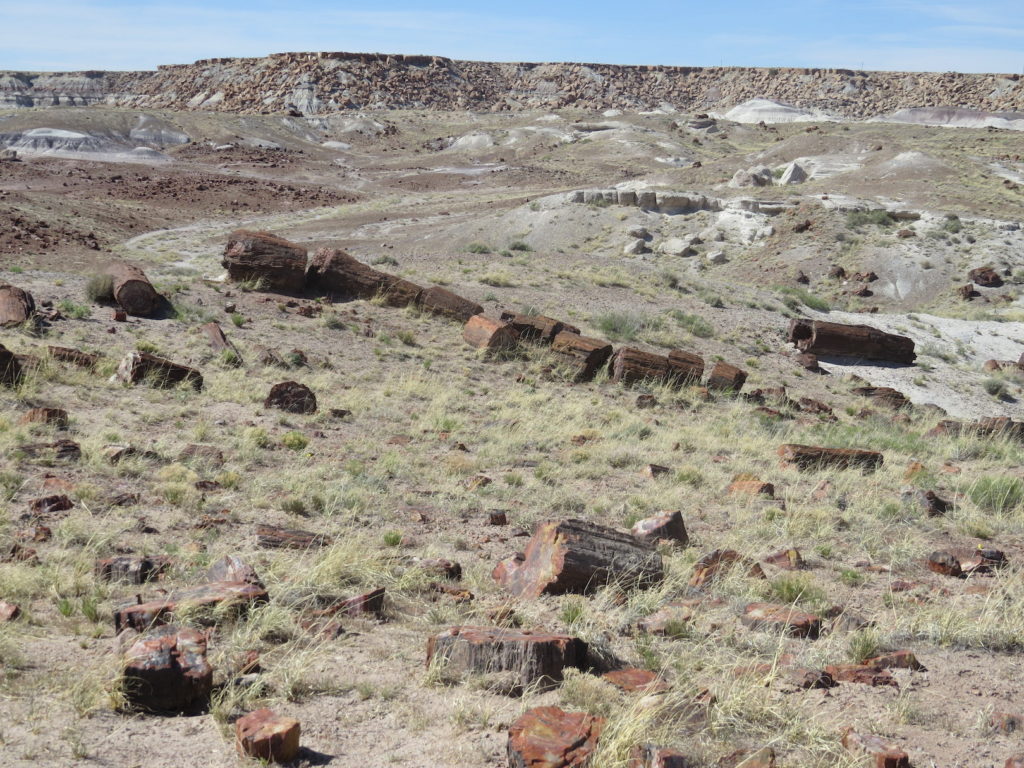
The park area has been populated for nearly 15,000 years starting with the Paleoindians from 13,500 BCE to 6,000 BCE according to researchers. After them came the Archaic, Basketmaker, and Pueblo peoples. As the climate changed so did the people’s lifestyles, becoming less nomadic and more bound to an area. The people that used the petrified wood to make what is now called agate houses lived here between 700 and 1,000 years ago. Each square foot of the petrified wood in this house weighed about 200 pounds.

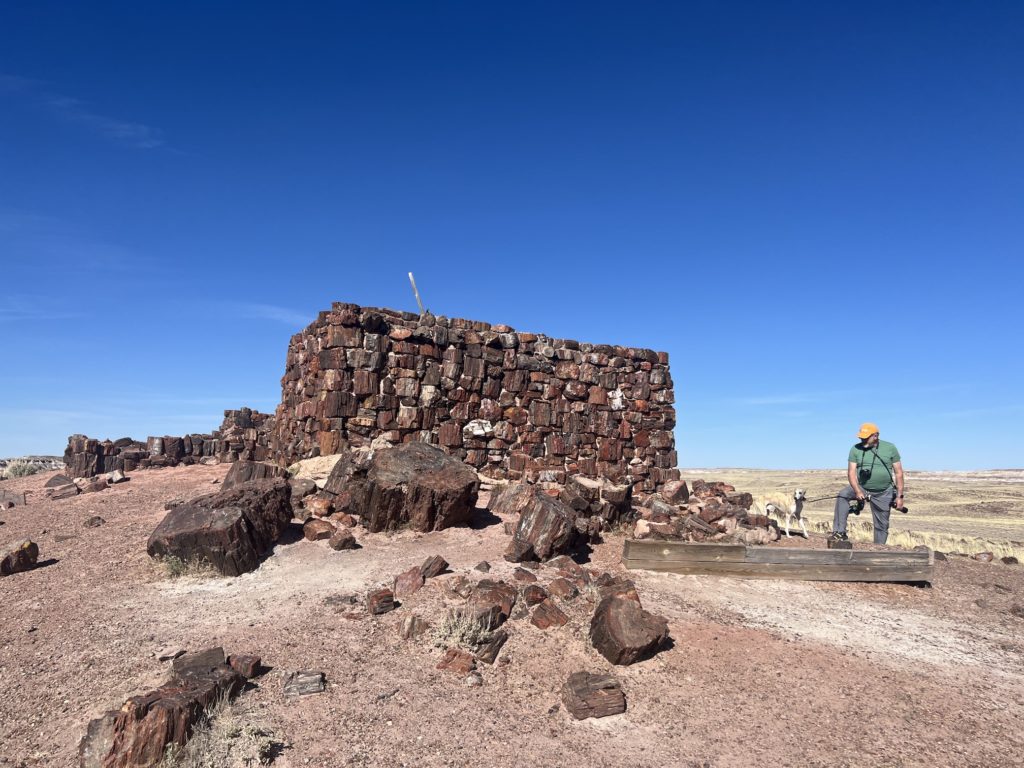
While the park can be underwhelming if you are looking for amazing landscapes, geographic hills, and valleys, I just need to remember that the whole reason the people were here is because of the availability of land to hunt and farm. This was a large forest, river bed, prairie that, at times at least, was conducive to hunting and growing food in quantities to sustain larger populations of people. The beauty of the petrified wood lies littered at our feet nearly every step we take and seeing how it was used to improve the lives of the pueblo people many years ago makes for even more amazing.